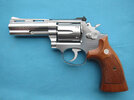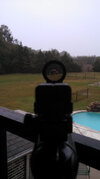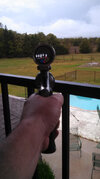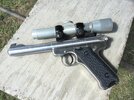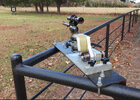westernrover
Member
- Joined
- May 4, 2018
- Messages
- 1,613
In the early and mid-eighties literature concerning the Dan Wesson revolvers, the tensioned barrel was frequently cited as a major reason among several other factors combined to lending DWA revolvers greater accuracy that was most notable at ranges beyond 50 yards. The theory offered in explanation was that the barrel tensioned between the frame and muzzle nut flexed and whipped more consistently than one fixed on only the frame-end. Is this true, or have we found different explanations or alternative understandings in hindsight and given the benefit of 40 years to consider it?
If I recall correctly, someone did further experimentation with tensioned barrels on rifles and the results did not necessarily validate the supposed tensioned-barrel advantage. Unforunately, I don't know any more than that, but perhaps someone else can explain.
If I recall correctly, someone did further experimentation with tensioned barrels on rifles and the results did not necessarily validate the supposed tensioned-barrel advantage. Unforunately, I don't know any more than that, but perhaps someone else can explain.


